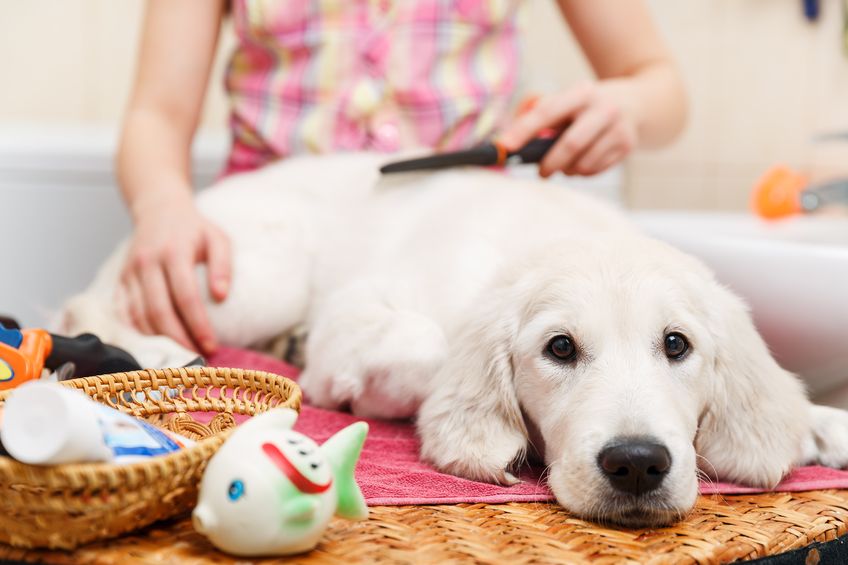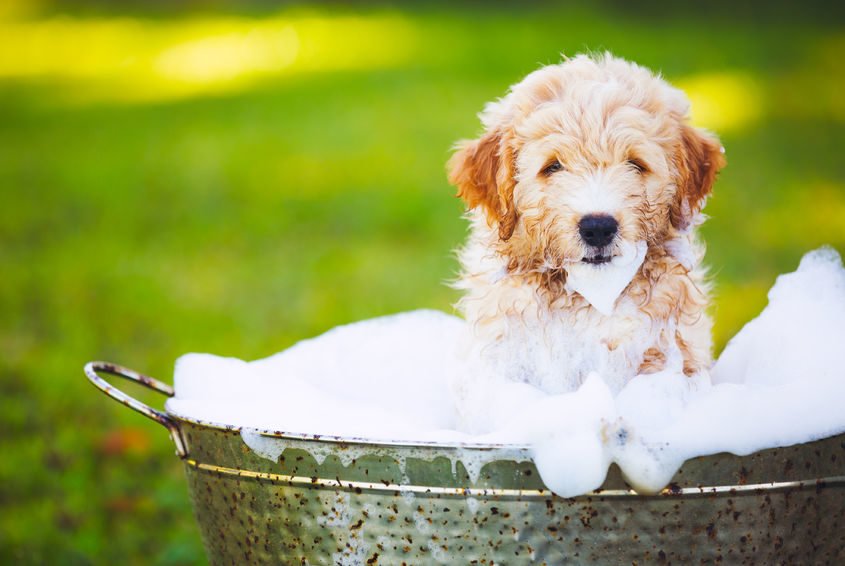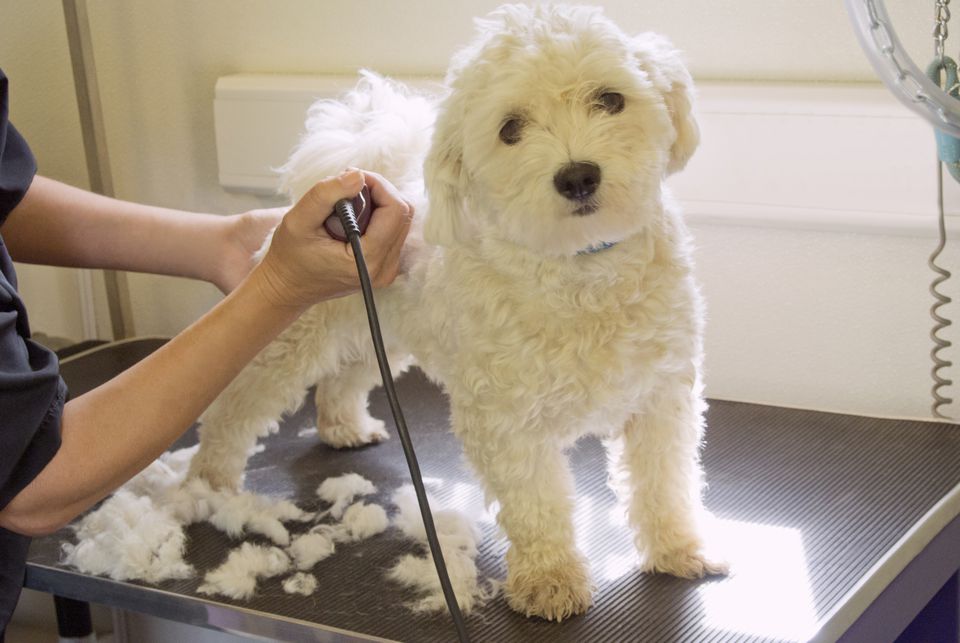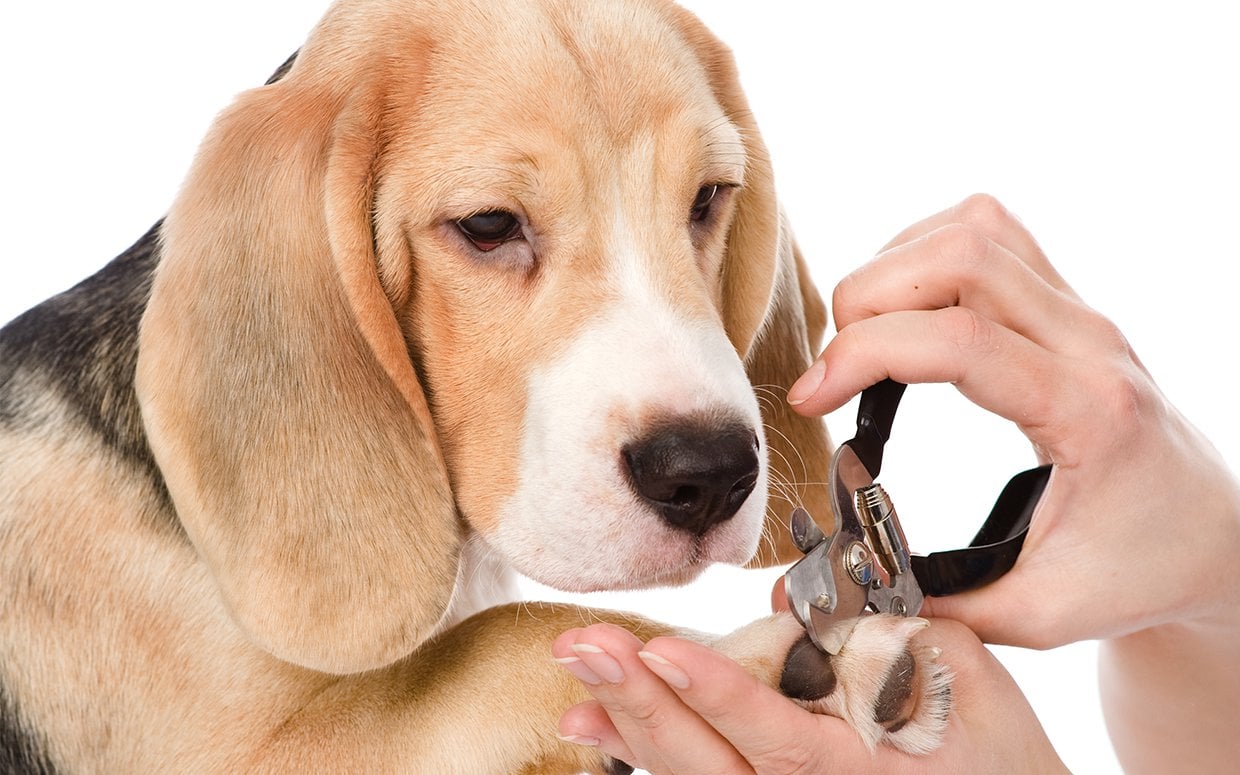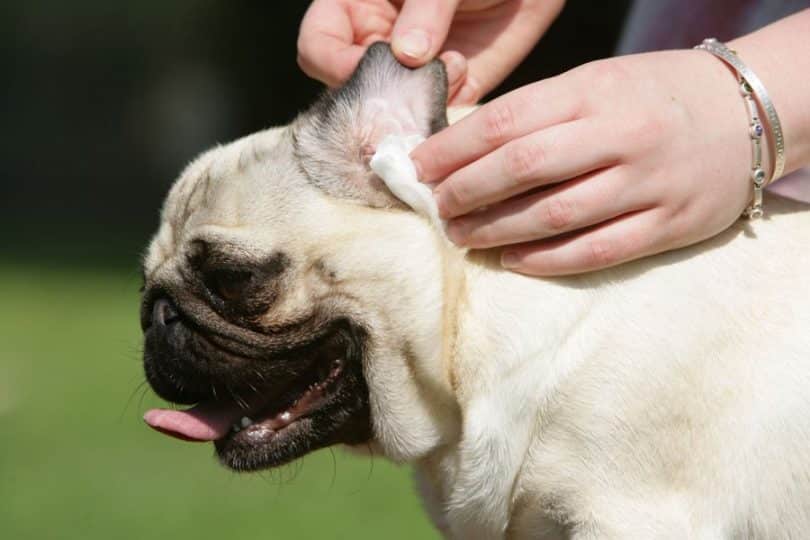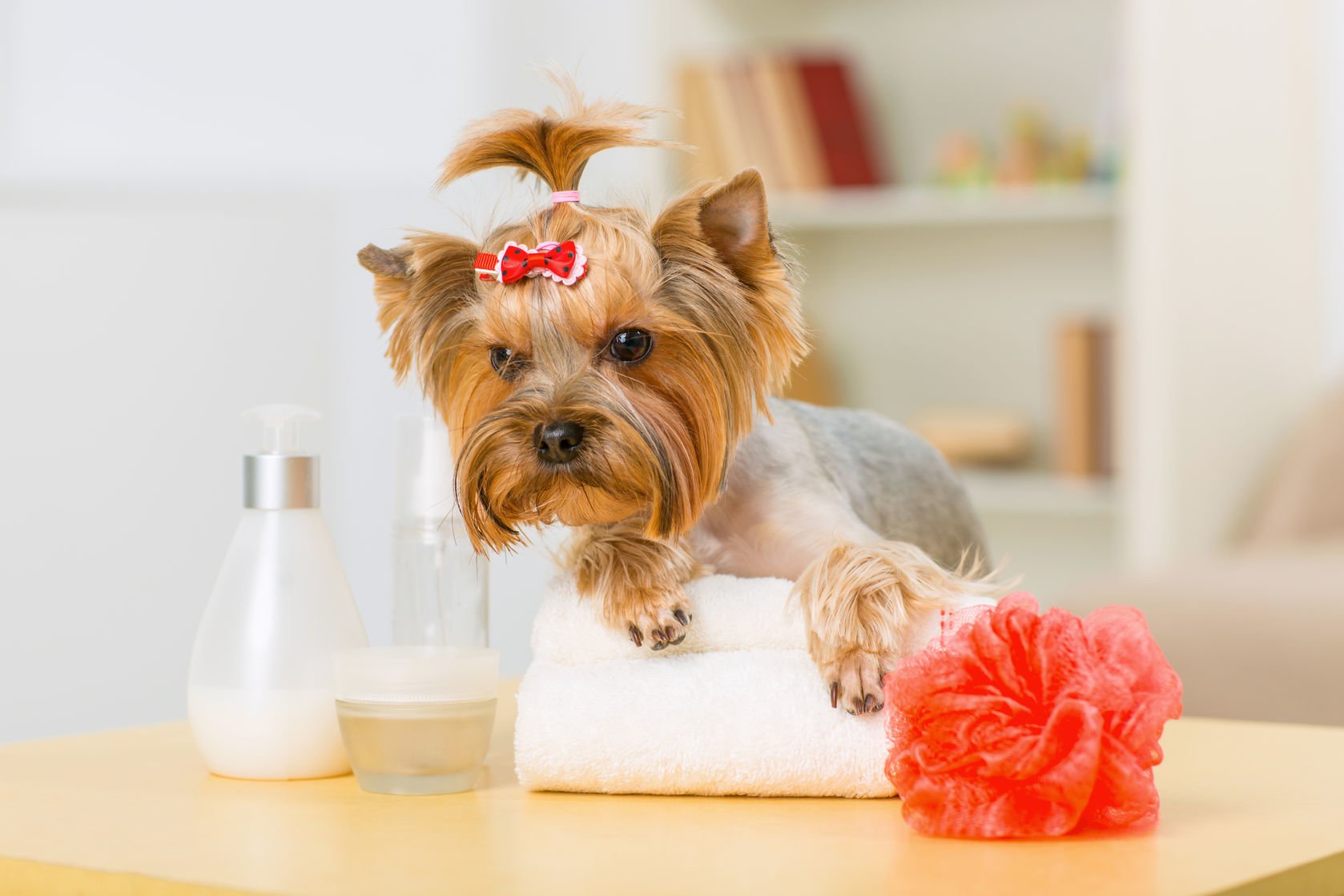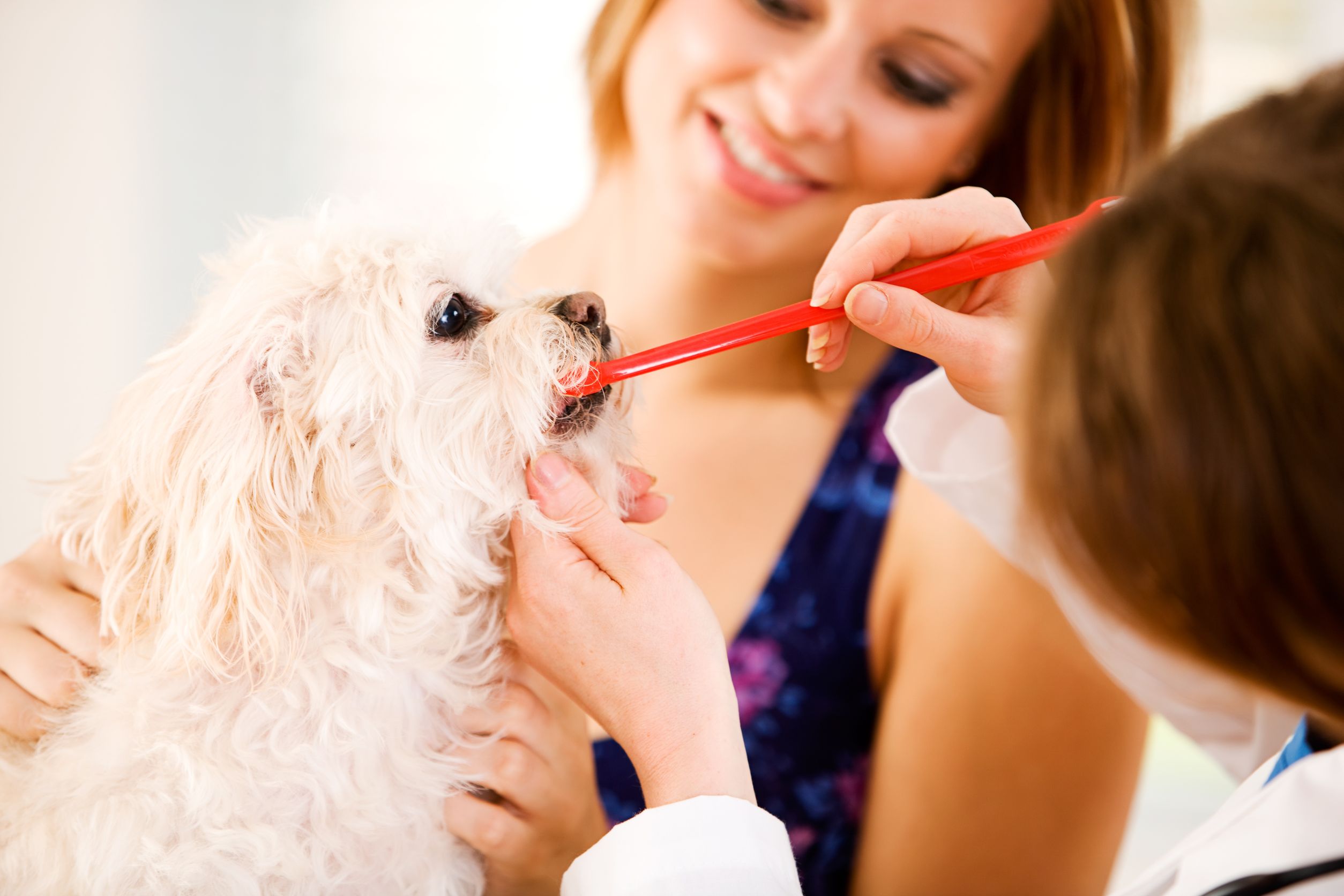Grooming your dog keeps him healthy and is also an important part of your relationship. When you’re grooming your dog, you’re not only keeping his coat, skin, feet, ears, and teeth healthy, you’re becoming familiar with his body so that you’ll notice early on if anything is unusual and needs veterinary attention.
When you’re learning to groom your dog, be patient and use lots of treats. Start slowly and add more as your dog accepts what you’re doing. If you start getting frustrated, stop and come back to it later. Remember to keep it positive and fun, and take your dog to a professional groomer if needed.
1. Start With Brushing
All dogs need to be brushed on a regular basis. Brushing removes dead hair from the hair coat. It also prevents your dog’s hair from becoming clumped and matted. Matting and clumping of the fur may be more of a problem for some dogs than for others but it’s something you always want to avoid. Brushing also helps distribute the natural oils produced by the skin throughout the hair coat and keeps your dog’s skin and haircoat healthy and shiny. One of my favorite tools for brushing/de-shedding is the Furminator Deshedding Tool. This is not a tool that is right for all dogs but for those breeds that shed heavily or “blow” their coat in the spring, this is a terrific tool.
2. It’s Time For A Bath
Bathing is another part of grooming that should not be overlooked. It is a fallacy that dogs cannot be bathed often. In fact, if your dog leans toward skin issues such as allergies, bathing can be a very helpful tool in controlling those symptoms. Not all dogs need to bathe often but you should feel free to bathe your dog any time your dog gets dirty or simply smells “doggy”. Being prepared for the bathing process ahead of time can help make the procedure go more smoothly.
3. Consider A Fur Cut
Whether your dog needs to be shaved or not will depend on the individual dog. For the “non-shedding” breeds, such as poodles, Lhasa Apsos, Shih Tzus, and others, regularly shaving the hair coat to a manageable length can make caring for your dog much easier and less time-consuming, although it may not be strictly necessary for all of these breeds if you are willing to commit to the extra time necessary to maintain the long hair coat. For some breeds, there are particular styles that people associate with the breed, such as the “pom poms” left on a poodle’s tail and legs. Some people believe their dogs are more comfortable when shaved for the summer months as well.
4. Stay On Top Of Nail Trimmings!
Keeping your dog’s nails trimmed to an appropriate length is mandatory. Failing to do so risks the nails becoming ingrown and causing pain and infection to your dog. The frequency will depend on the individual dog. Some dogs do a good job on their own of keeping nails short through their daily physical activity. For other dogs, the nails can grow quickly and may need to be trimmed frequently. Check your dog’s nails at least once weekly to see if they need trimming. Pay close attention to the dewclaws (thumbs) as these are the most likely to overgrow for most dogs. Teaching your dog to allow you to handle his feet from an early age will make nail care easier for all parties concerned.
5. Don’t Forget About The Ears!
Your dog’s ears need regular attention too. Just as people tend to accumulate waxy debris in their ears, your dog can develop the same type of debris. Clean the ear canals as needed with a mild ear cleansing solution and cotton balls. Do not use Q-tips or other cotton-tipped applicators to clean the depths of your dog’s ear canals. You can damage the eardrum with these tools. You can purchase a safe ear cleansing solution from your local pet store or check with your veterinarian for a specific recommendation. Check your dog’s ears for redness, discharge, odor, or any other abnormalities regularly as well. Consult your veterinarian if you notice these things.
6. Wipe Off His Eyes
Clean your dog’s eyes as needed. Many dogs have a minor discharge from their eyes which may accumulate in the corner of the eyes and even stain the fur. This is more common in some breeds than in others and is particularly prevalent in the short-nosed breeds. Clean your dog’s eyes with warm water and cotton as needed. For those dogs with tear stains under their eyes, there are various remedies to help remove the stains and keep the fur clean. Check with your veterinarian for a recommendation. You should also check with your veterinarian if your dog’s eyes seem red and inflamed or if your dog is squinting, rubbing at the eyes, has a particularly heavy discharge from the eyes, or if the discharge is thick and mucus-like.
7. Dental Health Is Important For Dogs Too!
Finally, your dog’s teeth need to be addressed as part of your regular grooming procedures also. Oral care is important in keeping your dog healthy. Daily tooth brushing is the gold standard. If your dog will not allow brushing, other alternatives include oral treats such as Greenies Dental Chews. Consult your veterinarian for more advice about oral health care for your dog.
Recent Pet Posts
Blog Categories
Product categories
- Accessories (7)
- Chicken & Veggie Wraps (8)
- Grillers Jerky Tenders (4)
- Jerky Treats (10)
- Made in the USA (9)
- Non-Rawhide Treats (28)
- Beggar Bone (11)
- Bully Sticks (4)
- Butcher Bone (4)
- Cod Skin Fish Treats (3)
- Pork Skin Twists (2)
- Pressed Rawhide Bones & Rolls (16)
- Bones & Rolls (6)
- Pressed Rawhide Bulk (6)
- Twist Sticks (4)
- Savory Munchies (13)
- Supreme Bones & Rolls (48)
- American Rawhide Bulk (16)
- Rawhide Bones (14)
- Rawhide Chips (6)
- Rawhide Rolls & Sticks (12)
- Uncategorized (8)

